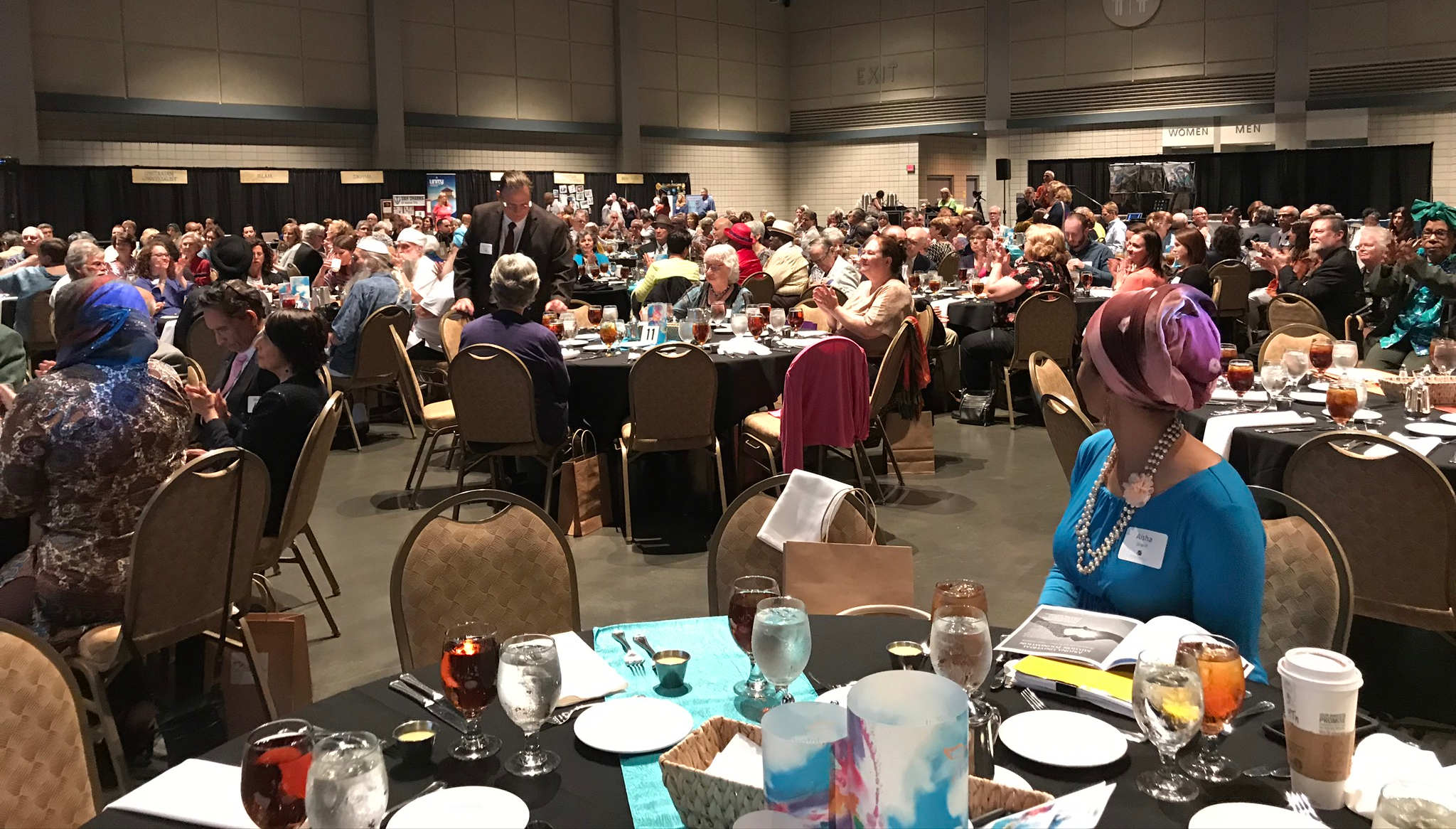The uniqueness of the Table of Faiths event is its capacity to be both informational and relational.
By Geneva Blackmer
Almost six years ago, I came to Kansas City for an internship with the Rev. Dr. Vern Barnet and the Greater Kansas City Interfaith Council. Despite Vern’s best efforts to talk me out of it, I was deeply drawn to Kansas City as a model for interfaith work. I sincerely believe that Kansas City’s rich ecumenical and interfaith history offers an approach to interfaith work that can, and should, be studied for its broad applicability in both rural and metropolitan communities. I even dedicated my master’s thesis, the Kansas City Interfaith History Project, entirely to the subject.
As a bright-eyed undergraduate student, I was eager about the possibilities for interfaith work to engage deep and meaningful social change. I believed that interfaith work could change the world; and if we are being honest, I still do. Table of Faiths was my first real glimpse into the power of relationship as a path toward cultivating mutual understanding across lines of difference. I remember entering the event space at the Westin at Crown Center in complete awe of the Greater Kansas City community.
The uniqueness of the Table of Faiths event is its capacity to be both informational and relational. Moving around the room, you could visit informative tables representing the vast diversity of faith traditions throughout Greater Kansas City and engage in meaningful exchange with practitioners and faith leaders. Gathering around the table together for a meal, relationships flourished naturally, and suddenly strangers become family.
In 2016, the theme for Table of Faiths was “Mosaic in Motion: Embracing a Changing World.” Like a mosaic, the many faith traditions of the world each contribute something unique and beautiful to this complex and harmonious pattern of spiritual wholeness. By honoring the sacred in others, we can behold, and contribute to, this beautiful and enriching web of religious and cultural diversity.
As a young college student, Table of Faiths gave me hope for a future beyond the polarizing divisions of our time. It demonstrated humanity’s beautiful capacity for mutual understanding and shared idealism. This “mosaic in motion” is an emblem of how we all must come together to create a perfect whole. If we ever hope to adequately address the great crises of our time, we must look to the wisdom of all the traditions of the world, not just our own. Events like Table of Faiths embody the potential for us all to live cooperatively without the force of blind homogeneity. If anything, it is our multeity that will save us.
[Geneva Blackmer is the immediate-past program director for the Interfaith Center at Miami University and administrative director for the Interfaith Council of Southern Nevada. The founder of the Kansas City Interfaith History Project and author of the Ecumenical and Interfaith History of Greater Kansas City, she is an at-large director for the Greater Kansas City Interfaith Council. Her faith tradition is Zen Buddhism.]

